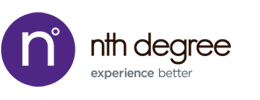The one thing everyone seems to agree upon regarding 2020 is that no one saw it coming. Whether 2020 brought on successes or failures, business growth or hardship, health or sickness, inner peace or strife—one thing is for certain—the world has changed dramatically, and our industry along with it. But the question I pose to this new reality is how long will this change hold, and will the elements of change be necessary? Will we truly learn from this experience and use this knowledge to drive our industry forward? Or will we rush back as quickly as possible to the way things were before, in our basic human quest for normalcy? We should consider these questions as we continue into 2021 towards 2022 and beyond.
Change & Uncertainty
Most of us don’t love change. Our brains thirst for patterns and consistency—both consciously and subconsciously. 2020 brought relentless uncertainty and change, which has not lost much momentum as we enter Q2 of 2021. Look no further than the overuse of the phrase “when things get back to normal” to see how we are automatically pushing to return to a time where it was not so hard to “just live” our everyday lives. The brain is constantly looking for shortcuts to cut down on its workload to ease our cognitive overload. When we experience changes on every front, like in 2020, it’s hard for our subconscious to find its usual synaptic shortcuts, quickly driving us to mental fatigue. For this reason alone, our subconscious will fight to direct us back towards the way things were before COVID-19, purely to conserve mental energy. We must be aware of this “default” as we move further into 2021 to ensure we don’t allow ourselves to be tricked into reverting to what WAS, simply because it IS mentally easier.
Lessons Learned
I am hard-pressed to think of a more fitting English Proverb than “necessity is the mother of all invention” for our industry. While it has been thrilling to see our industry’s recent innovation not only to stay alive but also deliver quality digital experiences to audiences around the world, I have also seen our industry drive certain ideas forward which proved unnecessary. Developing incredibly complex and sophisticated solutions and virtual environments, while effective for some, has proven to be overkill and wasteful for others. Yet when COVID-19 first hit and face-to-face events were shuttered, the industry seemed to agree unanimously that more was better. We essentially became our own echo chamber, driving the industry and our clients towards these complex solutions without the proper data or proof points to do so safely. I caution us not to fall prey to our own industry confirmation bias. When deciding if something is truly a change for the better and should live beyond the COVID-19 era, we need to ensure we are not seeking information or patterns that confirm our thinking. Rather, we should attempt to find counter-intuitive data points to challenge and prove (or disprove) our thinking. By doing this, our industry will carry the real innovations forward and dispense the artificial.
Expectations
Setting and aligning expectations with internal stakeholders and management and meeting and exceeding our audiences’ expectations must continue to be at the forefront of our strategic planning. This task has always been a difficult piece of event professionals' jobs, and 2020 has only made it harder. During our peer-to-peer insights roundtable, we found that expectations seemingly shifted with the wind, even throughout the last three quarters of 2020 and the first quarter of 2021. These changing expectations included what senior-level management expected from their virtual event investments to what an attendee expected to gain—or even pay—for attending such events. With 2021 showing no signs of slowing down this expectation carousel, the process of defining and clearly communicating expectations needs to be at the forefront of your strategic messaging. It is in your best interest to openly communicate expectations and define where the baseline thinking begins, than assume expectations are understood and let your attendees or management decide where they would place that same baseline.
We are in the behavior business. The more we learn and understand how and why we do what we do, the better we will deliver tailored experiences to help our industry deliver success. Years of onsite experience have shown us that what people do is very often not the same as what they say they do. Trying to better understand the “why” behind this may be the secret we need to ensure a truly better second half of 2021 and beyond.
nthdegree.com


 404-296-5282
404-296-5282 3237 Satellite Blvd
3237 Satellite Blvd